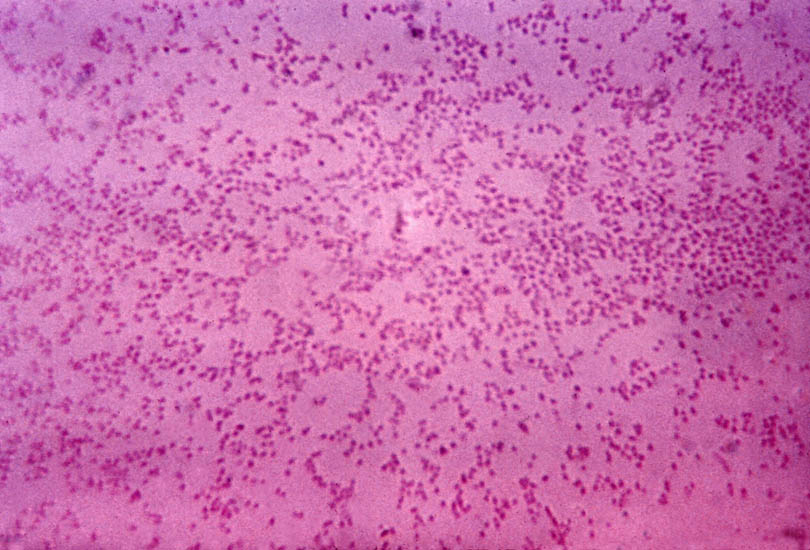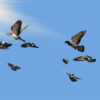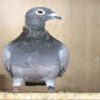
Identify Respiratory Problems in Pigeons Early
Identify Respiratory Problems in Pigeons Early
When racing season is around the corner, every fancier is focused on conditioning, nutrition, and motivation. But even the best training schedule won’t help a bird that’s struggling to breathe. Respiratory infections are among the most common and performance-damaging issues in racing pigeons—and often, they go unnoticed until it’s too late.
Pigeons are prey animals by nature, which means they tend to mask signs of illness, especially in a competitive loft setting. A bird can look healthy and active, yet still suffer from chronic respiratory infection, air sac inflammation, or even trichomoniasis. If left unchecked, these conditions can severely impact race readiness, stamina, orientation, and immune resilience.
In this guide, we’ll break down everything you need to know about:
-
How to spot respiratory problems before racing season begins
-
What subtle symptoms to watch for
-
How to run basic health checks
-
Preventive treatments and protocols
By proactively addressing respiratory health, you’ll start the season with a team of birds that can breathe strong, fly longer, and recover faster.
Why Pre-Season Respiratory Checks Are Essential
A well-conditioned pigeon that can’t breathe properly will underperform plain and simple. Respiratory infections reduce oxygen flow, increase energy expenditure, and cripple a bird’s endurance mid-flight.
What Can Happen If You Miss the Signs?
-
Delayed returns and poor race results
-
Loss of direction or disorientation
-
Weight loss and slow muscle development
-
Reduced immunity to other diseases
-
Poor response to vaccinations or supplements
Pre-season health checks aren’t just about treatment they’re about preventing setbacks before they cost you the race.
Common Respiratory Diseases in Racing Pigeons
Before we go into detection and prevention, let’s quickly highlight the most common respiratory illnesses:
1. Chronic Respiratory Disease (CRD)
Caused by Mycoplasma, often in combination with E. coli, Chlamydia, or viruses. It leads to:
-
Nasal discharge
-
Gurgling or wheezing sounds
-
Reduced stamina
2. Trichomoniasis (Canker)
Affects the throat and can obstruct the airway:
-
Cheesy yellow deposits in the mouth
-
Difficulty swallowing
-
Drooling or foul-smelling beak
3. Air Sacculitis (Air Sac Disease)
Often caused by fungal or bacterial infections:
-
Noisy breathing
-
Rattling sounds on exertion
-
Poor feather condition
4. Aspergillosis
A fungal infection affecting the lungs:
-
Open-mouth breathing
-
Weakness or collapse during flight
-
Increased thirst and weight loss
These conditions can become subclinical—meaning your birds appear fine on the perch but are suffering internally.
How to Spot Hidden Respiratory Problems
Your pigeons won’t always show the classic “sick bird” signs. Instead, look for performance-related clues and small changes in daily behavior.
Subtle Signs Include:
-
Slight tail bobbing when resting
-
Open beak after short flights
-
Slow weight gain during conditioning
-
Occasional sneezing or head shaking
-
Fluffed feathers despite mild weather
-
Unusual gurgling or nasal clicking sounds
Don’t rely solely on symptoms. Instead, conduct systematic checks at least 3–4 weeks before your first race.
Pre-Race Health Check Routine
You don’t need lab equipment to detect respiratory issues. Here’s how to check your pigeons the hands-on way:
1. Weigh Each Bird Weekly
Sudden weight loss or difficulty gaining weight despite a good diet can signal chronic infection.
2. Listen to Breathing
Hold the bird close to your ear and listen after mild exercise. Any rattling, wheezing, or popping sounds? That’s not normal.
3. Inspect the Mouth and Throat
Use a headlamp or soft light to check the back of the throat for:
-
Mucus
-
Canker (yellow plaques)
-
Swelling or redness
4. Monitor Droppings
Loose droppings, especially green or slimy ones, can signal stress or systemic illness, which often starts with respiratory distress.
5. Check the Nose and Eyes
The nostrils should be dry and clean. Any discharge, staining, or blockage may indicate sinus involvement.
Preventive Treatments Before Racing Season
Even if your birds appear healthy, it’s smart to run a preventative protocol 2–3 weeks before your first training tosses. This clears out hidden infections and supports respiratory strength.
Common Pre-Season Treatments:
-
Respiratory powder blends (containing tylosin or doxycycline)
-
Trichomoniasis medications like dimetridazole or ronidazole
-
Herbal respiratory cleansers (eucalyptus, garlic, oregano)
-
Vitamin A and B-complex to support mucous membrane health
Pro Tip: Always rotate antibiotics and avoid unnecessary overuse. Resistance is real—and harmful.
Natural Ways to Strengthen the Respiratory System
Supplemental meds aren’t your only defense. By enhancing your loft’s overall health, you’ll build birds that are naturally resilient.
1. Ventilation Is King
Poor airflow causes ammonia buildup, which damages air sacs and lungs. Use adjustable vents to maintain clean, dry air.
2. Use Absorbent Bedding
Moisture traps pathogens. Replace bedding frequently with absorbent materials like hemp, pine, or biochar-enhanced litter.
3. Add Natural Respiratory Boosters to Feed
-
Garlic oil for immune and lung support
-
Brewer’s yeast for vitamins and gut-lung connection
-
Echinacea or oregano oil as herbal antimicrobials
4. Train Smart
Don’t send birds out for long tosses until you’re 100% confident their breathing is strong. Build distance gradually, starting with short, low-stress flights.
How Long to Wait After Treatment Before Racing?
If you do medicate your birds, allow at least 7 days of rest and detox before serious training. During this time:
-
Support gut flora with probiotics
-
Provide B-vitamins and liver detox agents
-
Gradually reintroduce flying with short morning tosses
Pigeons that go into race season immediately after medication are more likely to underperform or relapse.
When to See a Vet or Get Lab Testing
If symptoms persist after your preventive protocol, or if multiple birds are affected, consult a vet. You may need:
-
PCR testing for respiratory pathogens
-
Fungal cultures for aspergillosis
-
Crop swabs or trichomonas checks
Diagnostic clarity can help you avoid ineffective treatments and target the real problem.
Final Thoughts: Breathe Easy, Race Strong
Respiratory infections are silent race killers. They lurk behind shiny feathers and clear eyes, only revealing themselves when your best bird comes home dead last. But by learning how to identify early signs, perform health checks, and apply preventive care, you’ll set your loft up for a season of strength, stamina, and smooth breathing.
Breathe first. Fly fast. Race to win.
Need help choosing pre-season respiratory treatments or herbal boosters for your pigeons?
Check out our trusted line of respiratory health supplements, designed specifically for racing birds.
Your birds train hard make sure they can breathe easy.


